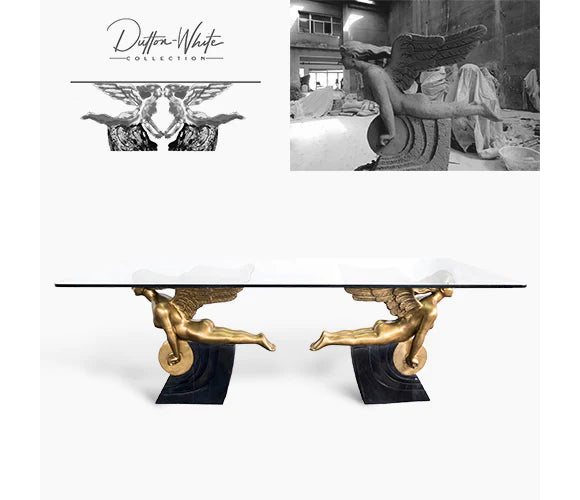 Cast copper sculpture is not a general and simple process but a sculpture made by running in through professional molds and skills. Let's take a specific look at the production process of Triaxtone:
Cast copper sculpture is not a general and simple process but a sculpture made by running in through professional molds and skills. Let's take a specific look at the production process of Triaxtone:

1. Design scheme deepening and clay sculpture making: first, design the drawings for the overall conception of the sculpture, and then cast the cast copper sculpture according to the appearance of the pattern. Then, make a rough model of the designed pattern with clay manuscript to facilitate our finalization. If there is anything bad, we can change the clay sculpture. Secondly, enlarge the clay sculpture according to the proportion and make the clay sculpture one by one.


2. Mold turning: after the clay sculpture is made, the mold needs to be turned. There are generally two kinds of molds: one is gypsum turning and the other is silica gel turning. We use gypsum turning under less complex circumstances, and vice versa.


3. Wax mold pouring: pour the melted paraffin into the made gypsum mold or silica gel mold, and it will become a wax mold after the paraffin is cooled.


4. Shell making: there are two kinds of shell making and mold turning: one is precision casting and the other is resin sand box making. In small or complex parts, we should choose precision casting, and sand box production is generally suitable for simple smooth surfaces without much process.

5. Casting and grinding: turn copper into copper under high temperature environment, pour water into the prepared shell or sand box, and then polish the riser.

6. Splicing and shaping: put the polished copper sculptures together to form a complete whole. When this step is completed, we can basically see the general appearance of the cast copper sculpture.

7. Clean the welded junction and color the surface: treat the welded parts of our spliced bronze carving to be the same as our clay manuscript, and then color the surface.

8. Oiling and wax sealing: after cleaning the welded junction and coloring the surface, the next step is to oil and wax it. Oiling and wax sealing can keep the sculpture up-to-date for a long time.

9. Installation: after completing the above 8 steps, only installation is left. During installation, professionals are generally required to guide the installation according to the on-site construction environment.


